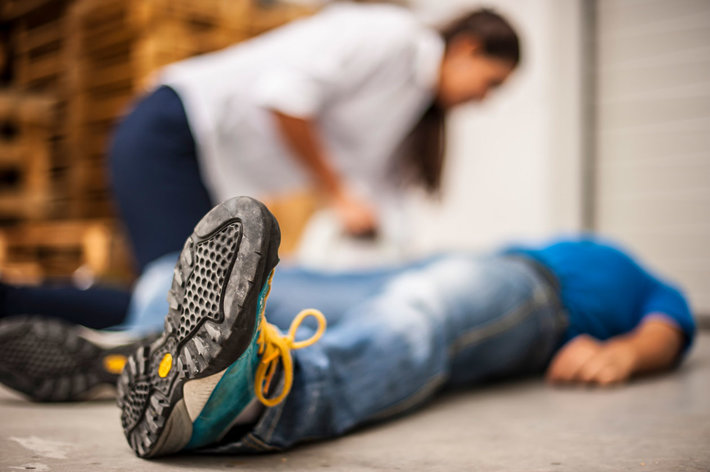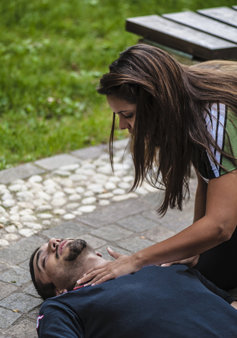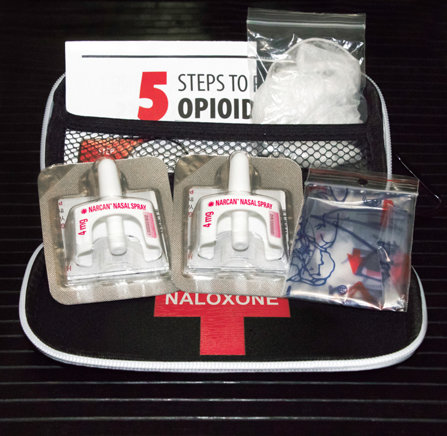Responding to an Opioid Overdose

The steps one must take to respond to an overdose are not complicated or confusing, and they should be known by all, memorized even. What does a bystander do if they spot someone overdosing on drugs? Beyond calling 911, what can a friend, family member, loved one, or eye witness to an overdose do to preserve an addict’s life?
Addiction is not just a behavioral crisis or a personal affliction. It’s a life or death problem. Knowing how to save the life of an overdosing addict is one crucial step towards helping that person get off drugs. Without providing personal or medical advice, this article will lay out the basic steps of overdose response as determined by medical authorities. The article will also cover why it’s so important that people memorize these steps.
Steps to Take When Confronted with an Overdose
A drug overdose is a life-threatening emergency, particularly when such an overdose involves opioid drugs. Given the risk of loss of life, it’s important to know how to respond to such a crisis. And while not all response efforts will result in success, administering the correct first aid steps during an overdose dramatically increases the addict’s chances of survival.
According to the Centers for Disease Control and Prevention, the correct steps to follow when responding to an opioid drug overdose are as follows:
1). Assess the scene of the incident. The first step when responding to any emergency is to assess the scene, to determine if it is, in fact, an emergency. Furthermore, it’s important to assess the scene for potential dangers. Even if a person seems to be in a life or death crisis, do not attempt to intervene if doing so would put you in a dangerous position.
2). Once you’ve determined that an emergency is occurring and that it is safe to administer first aid, determine the cause of the emergency, in this case, an overdose.
3). If no one else is nearby, call 911 before you begin administering first aid. If someone else is nearby, instruct them to call 911 so you can begin administering first aid.
4). An overdose can sometimes be difficult to distinguish from other types of emergencies. Now that you’ve assessed the situation, determined an emergency was occurring and called 911, it’s time to determine the type of emergency. An overdose could be apparent by the presence of drug use paraphernalia, by track marks on the victim’s body, by the victim being in a prone position, unconscious, slow or shallow breathing, irregular breathing, or no breathing at all, slow or no heartbeat, and by the victim being unresponsive. Other signs of an overdose include an inability for the person to wake up, a limp body, extreme drowsiness, pale-blue, cold and/or clammy skin, choking or gurgling sounds or obvious difficulty swallowing, and very small, almost “pinpoint” pupils.

5). If the victim is not breathing and has no pulse, they only have a few minutes to live, as the brain and heart cannot survive without oxygen and blood flow. If you suspect an overdose is occurring, administer naloxone immediately. Follow the manufacturer’s instructions, which should be printed on the product label. Administer a second dose of naloxone if the person does not respond to the first dose. If the victim is not breathing and has no pulse, immediately begin CPR after administering naloxone. Do not wait for the naloxone to take effect before you begin CPR.
6). If you do not have naloxone to hand or if the naloxone you administer does not seem to be working and the person has no pulse and is not breathing, begin administering CPR immediately. If available, use a plastic barrier on the victim’s mouth with a hole cut in the center, to prevent the transmission of infectious diseases.
7). Monitor the victim. Even if the victim begins breathing again and resumes consciousness, the emergency is not yet resolved. Stay with the victim, monitor them for further emergency conditions, and be ready to administer first aid again should they become unconscious.
First aid aims to provide immediate, life-saving care to a victim, to stabilize them from further harm. The goal is not to heal them or to fully address their injuries, merely to prevent further harm until EMTs (Emergency Medical Technicians) arrive.
Additional Resources on Overdose Response
While responding to a drug overdose only has a few key steps, a general understanding of first aid increases efficacy and confidence. For example, knowing how to administer CPR is crucial in responding to opioid overdoses and many other types of emergencies. Naloxone is not always available, and even when it is, it is not always effective. While CPR is by no means a sure guarantee that the victim will recover, CPR is the best technique that responders have to attempt to save the life of someone who has overdosed but who has not responded to naloxone medication.
The following are good resources for learning how to administer CPR and respond to overdoses:

The Importance of Being Prepared with Naloxone
With tens of thousands of Americans dying every year from opioid overdoses, every American family should keep naloxone in their homes and automobiles. It is an easy-to-use medication and it’s readily available. And according to the CDC, between 1996 and 2014, responders effectively administered naloxone to reverse at least 26,463 near-fatal overdoses thanks. Naloxone is a life-saving medication.
However, naloxone should not be seen as a solution to opioid addiction. Just because an addict is saved from a fatal overdose thanks to naloxone does not mean that they are safe or that they’re not at risk for another overdose. The best way to effectively help an addict who survives an overdose is to ensure that they enter into a qualified addiction treatment program.
Good Samaritan Laws; What Are They?
Given the illegal nature of drug use, some concerned passersby may be uncertain if responding to an overdosing addict would put them at legal risk. This may be a particularly relevant concern for the friends of an addict, especially if they are fellow drug users.
Thankfully, all 50 states in the U.S. and the District of Columbia have Good Samaritan laws. Good Samaritan laws are legal protections that ensure someone who helps in an emergency situation does not then wind up in legal or criminal trouble.
Annual Overdose Deaths Are on the Rise; Why Overdose Response Knowledge is So Important
Drug addiction is an extremely dangerous, potentially lethal crisis. And sadly, drug overdose deaths have been skyrocketing, suggesting that addiction to drugs is becoming more common and that drug use is becoming more dangerous.
Given that fatal overdoses were up 30% last year to more than 96,000 drug-related deaths, it’s not outlandish to think that every American knows someone who may be at risk for an overdose, hence the need to know how to respond to such life or death crises.
Addiction Treatment; The Universal Solution for Preventing Overdoses
Finally, while knowing how to administer the proper first aid in an overdose situation is immensely important, it’s just as crucial to understand that merely responding to an overdose is not sufficient in saving that addict’s life. Drug addiction is not something addicts can magically rid themselves of, simply by having a near-death experience.
The immediate follow-up after an overdose response is to ensure that the addict receives professional medical help as needed. Then, they need to be directed into a residential drug and alcohol addiction treatment center.
An effective response to an opioid overdose can save a life. But ensuring that the victim receives treatment for their addiction is what will prevent them from overdosing again.
Sources:
- https://www.cdc.gov/niosh/topics/opioids/response.html
- https://www.redcross.org/take-a-class/cpr/performing-cpr/cpr-steps
- https://www.ncbi.nlm.nih.gov/books/NBK470402/
- https://www.cdc.gov/niosh/topics/opioids/response.html
- https://www.drugabuse.gov/publications/drugfacts/naloxone
- http://www.dhs.state.il.us/OneNetLibrary/27896/documents/19DOPP/Recognizing_and_Responding_to_an_Overdose.pdf
- https://www.cdc.gov/mmwr/preview/mmwrhtml/mm6423a2.htm
- https://www.ncbi.nlm.nih.gov/books/NBK542176/
- https://www.cdc.gov/nchs/nvss/vsrr/drug-overdose-data.htm


 ®
®